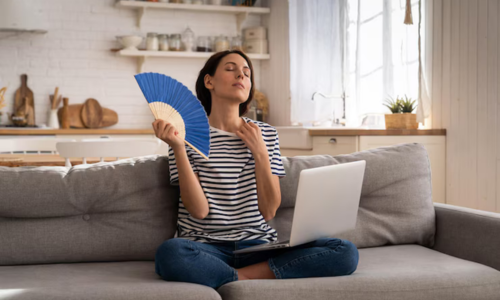When was the last time you thought about what’s in the air inside your home? Most of us don’t consider air quality until we feel its effects—sneezing, coughing, dry eyes, or worse. But indoor air pollution doesn’t just vary by day, it changes with the seasons.
If you’re planning to buy an air purifier or already own one, knowing when and how to use it seasonally can make a big difference in both health and performance.
Spring: Beat the Allergies Early
Spring might feel fresh and new, but for allergy sufferers, it’s the start of trouble.
Common air pollutants in spring:
- Pollen from blooming plants
- Mold spores from damp ground
- Pet dander (with more pets shedding)
Tip: Use your purifier continuously in bedrooms and living areas. Look for models with UltraHEPA filters, which are designed to trap allergens as small as 0.3 microns. If you’re searching for the best affordable air purifier, make sure allergen removal is a key feature.
Summer: Combat Smog and Smoke
In summer, air quality is often affected by increased smog levels, construction dust, and even wildfire smoke in some regions.
Why summer air gets worse:
- High temperatures increase ground-level ozone
- More pollutants from outdoor activities
- Potential wildfire smoke in dry areas
Key features to look for:
- Activated carbon filters (for odors, smoke, and chemicals)
- High CADR (Clean Air Delivery Rate)
- Smart sensors for auto-adjustment
This is the time to buy an air purifier if your region struggles with smoke or poor outdoor air during summer. Choose a unit designed for medium to large rooms if you plan to use it in open spaces.
Autumn: Mold, Dust & Indoor Air Quality
As temperatures drop and windows close, your indoor air gets more crowded—with dust, mold spores, and stale air. You may not notice it right away, but your sinuses and immune system will.
Typical autumn air challenges:
- Dust from dry leaves and heating systems
- Indoor humidity leading to mold
- Less ventilation indoors
Keep your purifier running in:
- Bedrooms at night
- Living rooms during the day
- Near HVAC vents for circulation support
This season also brings holiday sales, making it a great time to find the best affordable air purifier before winter hits.
Winter: Protect Your Indoor Air
In winter, your home is sealed tight to conserve heat, but that also traps pollutants. Indoor air can become two to five times more polluted than outdoor air.
Winter air culprits:
- Indoor smoke from cooking or heating
- Pet dander buildup
- Airborne viruses in closed spaces
What to look for:
- Multi-stage filtration (HEPA + carbon + pre-filter)
- Germicidal features (like UV-C, if ozone-safe)
Use your air purifier daily in high-traffic areas, especially if you’re spending more time indoors.
Conclusion
Using an air purifier year-round is ideal, but understanding seasonal triggers helps you get the most out of your device. If you’re looking to buy an air purifier, now’s the time to prioritize what matters most to your environment.
Want clean air all year long? Choose the best affordable air purifier that adapts to every season because fresh air isn’t just for spring.



